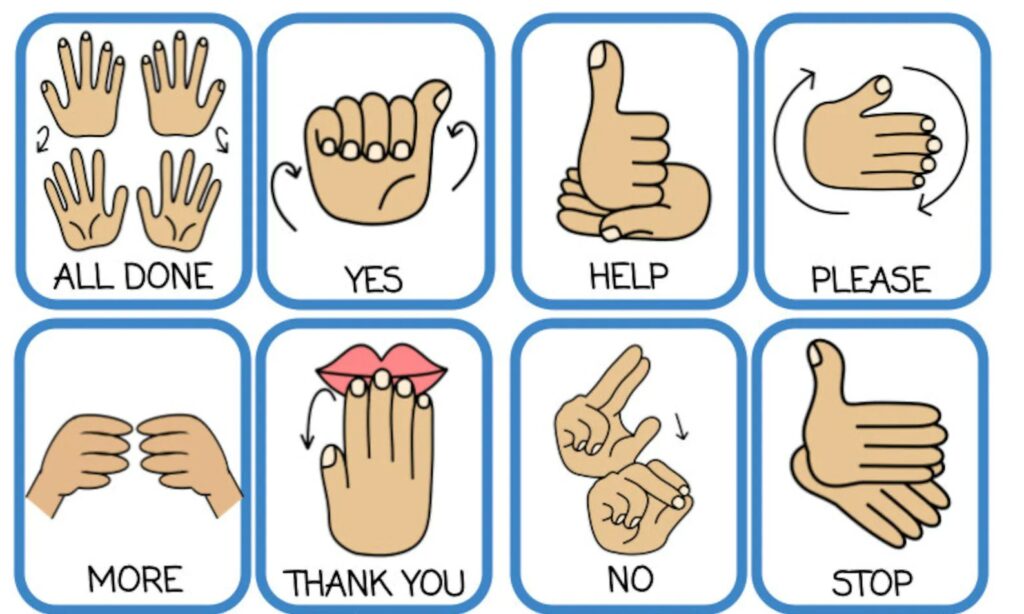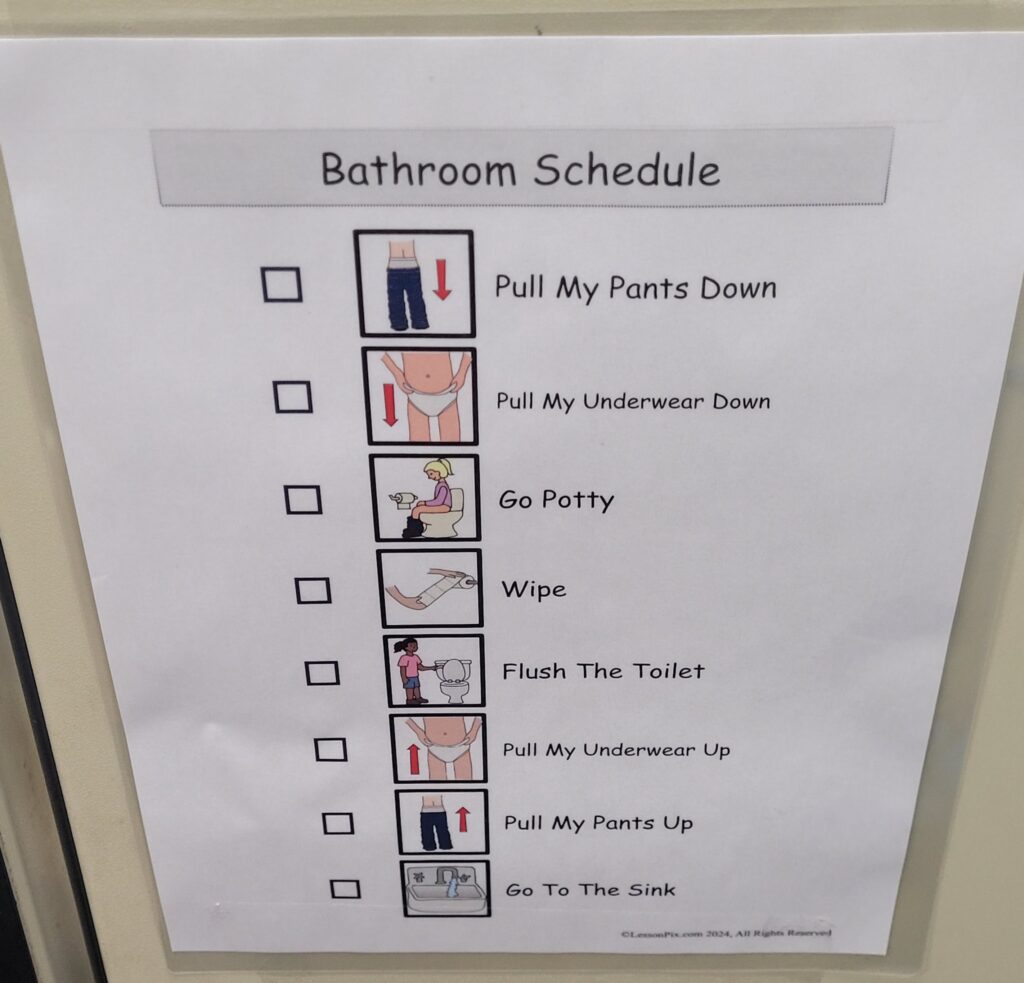Reflective Practices
Working with children with diverse needs
K and S are two amazing children who remind me that every child is unique, capable, and full of potential.

Working with K
K, who is four years old, has non-verbal autism and developmental delays. He uses touch chat and some sign language to communicate and uses some signs, such as ‘more’, ‘all done’, ‘apple’, and ‘cracker’. K is a strong and committed child who makes eye contact and enjoys songs like ‘Twinkle Twinkle Little Star’ and ‘Wheel on the Bus’. He also gets fascinated by the lights around him.
The main goals for K are to develop self-help skills and follow the class routine. To achieve these goals, a team of three educators, a support worker from Children’s Therapy, and another support worker from Insight, work together and provide him with the necessary support and guidance he needs. K’s parents have started potty training at home with the help of the support worker.
Most of the intervention approaches are focused on improving and fixing the problems in a child with disabilities and ignore him. “Children are “impaired”, have a problem to be fixed as compared with “typically “developing peers” (Hendra, 2024). It can be overwhelming for him and stressful. He has struggled to follow it and has gotten frustrated. I wonder how I can help him to participate and engage in the program without conforming. A way where he feels belongs and takes tiny steps to improve his participation and makes strong connections.
It’s not always easy to understand why a child behaves in a certain way, especially when it comes to potty training. Recently, when the mentor educator and I tried to assist him in the toilet, he pulled our hair or scratched us. It left us wondering what could be the reason behind his behavior. After discussing it with the mentor educator, we realized that this was his way of expressing that he wasn’t ready for potty training yet or maybe he wasn’t comfortable with us. By being patient and understanding of the child’s needs and comfort level, we can help him achieve success in potty training at his own pace.

K returned to the center after two weeks away, and I assisted him in the bathroom. During this time, I asked him a series of questions to ensure he was comfortable and to understand his needs. These included: “Can you pull your pants down?” “Can you sit on the toilet?” “Can I change your diaper?” and “Can you pull your pants up?” K’s behavior was positive, and I was pleased with how smoothly the process went.
However, I also reflected on a previous experience where I made a mistake. The first time I helped K, I did not ask him any questions and he communicated his discomfort by pulling my hair. I realized that I should have respected his personal space and understood his non-verbal cues. It is important to always remember to respect each child’s individual preferences and needs. Acknowledging and accommodating each child’s diverse needs and having respectful and compassionate relationships with them are the foundations of inclusive practices.
S’s experiences
S is three and a half years old. He loves numbers, letters and books. When he moved to the Forest 3-5 classroom, have had difficult times during transitions. The educators took the books from him during transitions, and he had a meltdown. The consultant, OT and SLP from children’s family and resource center visited to observe him and they suggested using books for transitions rather than taking them away. The transitions become smooth for him.
S is a good walker. I held his hand during our walk to the library, and he enjoyed reading the books we found there. On our way back, I asked him to put the book away, but he wasn’t ready. We borrowed the book, and he held it in his hand while walking back to the center. He dropped the book twice, and I put it in his muddy buddy and said, “You can get it when we reach the daycare.” He tried to take the book out once, but it slid down near his foot. I was surprised when we reached the daycare, and he unzipped his muddy buddy to get the book. Usually, we help him to undress. “For children with autism, engaging in special interests can lead to better motivation, self-expression, socialization and more.”
During a playful afternoon at the art table, S and I engaged in a fun exercise. I wrote down the number 110, and to my delight, he correctly read it. We continued this game with numbers from 110 to 140, and S continued to impress me with his reading ability. As we played, I noticed that he was fully engaged and focused on the task at hand. However, when I asked him to identify the number that came after 140 without writing it down, he seemed to struggle and became increasingly frustrated. Despite my attempts to guide him, he threw all the crayons on the floor and refused to pick them up when I asked him to. I couldn’t help but wonder if my lack of attunement had broken the flow of our game, and if I could have done something differently to help S stay engaged and motivated.
S struggles when his mother arrives to pick him up. He previously ran in the hallway, making it difficult for his mother to dress him up. I suggested using a visual cue, such as a picture of his home, to help with the transition. His mother brought the picture, and we began showing it to S whenever she arrived. Since then, the transition has been much smoother.
Augmentative and Alternative Communication (AAC)
K is non-verbal and uses touch chat as a means of communication. On the other hand, S repeats whatever is spoken to them, which is known as echolalia. Visual cues are utilized for them. The use of augmentative and alternative communication (AAC) has proved to be highly beneficial for them, as it helps in improving their language skills and providing them with predictable schedules. “Early childhood classrooms present unique intersecting contextual factors that can impact the relevance, feasibility, and effectiveness of AAC interventions.”
Autism Spectrum Disorder
The concern is the rising number of children with Autism. In British Columbia, about 1 in 29 children has Autism. Autism is a spectrum. The abilities of people with ASD can vary significantly. For example, some people with ASD may have advanced conversation skills whereas others may be nonverbal. Some people with ASD need a lot of help in their daily lives; others can work and live with little to no support. “Autism is a very big continuum that goes from very severe—the child remains nonverbal – all the way up to brilliant scientists and engineers.” (Temple Grandin).
Characteristics of Autism
Non-verbal reasoning (Visual learner)
Exceptional memory
Perceptual motor skills
Exceptional skills in creative and imaginative expression (music, art, writing, drama).
Visuospatial ability (capacity to identify visual and spatial relationships among objects).
Impairment in social relationships
—-lack of awareness
—–unusual seeking of comfort when stressed
—–Impaired imitation skills
——Unusual toy play
——Inability to form friendships.
Insufficient communication and use of language
Perseverating on interests and activities
Dependence on routine
Behaviour problems
Variability of intellectual functioning
Uneven developmental profile
Difficulties with sleeping, toileting, and eating
Immune irregularities
Gastrointestinal (gut) problems
Unconventional reaction to sensory stimulation
Early diagnosis and intervention can have a positive impact on the well-being and quality of life of children with Autism. Early childhood educators and families can play an important role in early intervention. “Timely access to early evidence-based psychosocial interventions can improve the ability of autistic children to communicate effectively and interact socially” (WHO, 2023). If a child between the ages of two to four years old lacks speech and social interaction, it is imperative not to delay intervention. I have found it is sometimes difficult to work with children with Autism because of a lack of training and resources. I have decided to find the information about autism, so I can help them better. It is consistent learning.
Working with K and S is an incredible journey. They both have distinct and strong personalities. A small interaction with them brightens up my day. Sometimes, it is challenging to assist them due to their unpredictable behavior. I would summarize my journey with them in Henderson’s words:
“Often I felt uncertain about what to do, how to help them and how to understand them, while experiencing my own frailties and anxieties about my in/competence and professionalism. So, I did what I do best and I watched, attuning myself to their world and listened, daily. On a continuous basis, they humbled me as I witnessed them trying to make sense of their world, my world, our world.”
Change in Schedule
I recently spoke with the mentor educator about our morning snack routine after receiving feedback from Karolyn. During our discussion, we realized that the routine was quite hectic with four transitions. We had never taken the time to reflect and discuss this with other co-workers, as we were so focused on following the established practices and routines. After some deliberation, the mentor educator and I decided to introduce an open morning snack approach, but I was worried about how the children would react. However, to my surprise, they cooperated very well and the transitions to snack time and outdoor play have become much smoother. The new routine has also proven helpful for K and S as there is no longer any waiting time. “Designing schedules that minimize transitions and create long periods of uninterrupted time allow children to develop their ideas and to pursue their inquiries. Fewer transitions also allow adults to spend time alongside children, observing, noticing, and co-researching.” (Early Learning Framework, 2019, p.24).
Conclusion
Each child is valued, respected, considered a gift, strong and capable in their uniqueness, and full of potential (ELF, 2019, p.15). Educators should maintain caring, kind, responsive, trustworthy and respectful relationships with children and families. Creating an equitable environment that encourages curiosity, cherishes differences, offers choices, and acknowledges the diverse needs of individual children can be accomplished. By learning about and understanding differences, kids can appreciate and respect diverse experiences and perspectives (ECEBC Code of Ethics, p.13). Educators collectively and collaboratively reflect on their practices, routines, policies and procedures, and ask questions: what are the purposes, and how to create spaces where all children feel welcomed and valued? Reflecting on our practices consistently is essential to eliminate personal biases, assumptions, and perspectives. Appreciating individual differences; hoping for children to succeed; valuing children’s viewpoints; rethinking the meaning of “differences”; new ways of teaching and learning and practicing equity are suggested competencies for educators to promote and practice inclusion (Lee & Recchia, 2016). Questioning the practices and procedures embedded in the program, having a conversation with fellow educators about routines and rituals, critically thinking about the image of a child and the role of an educator and co-creating spaces with children can foster an environment where all learn to live well together.